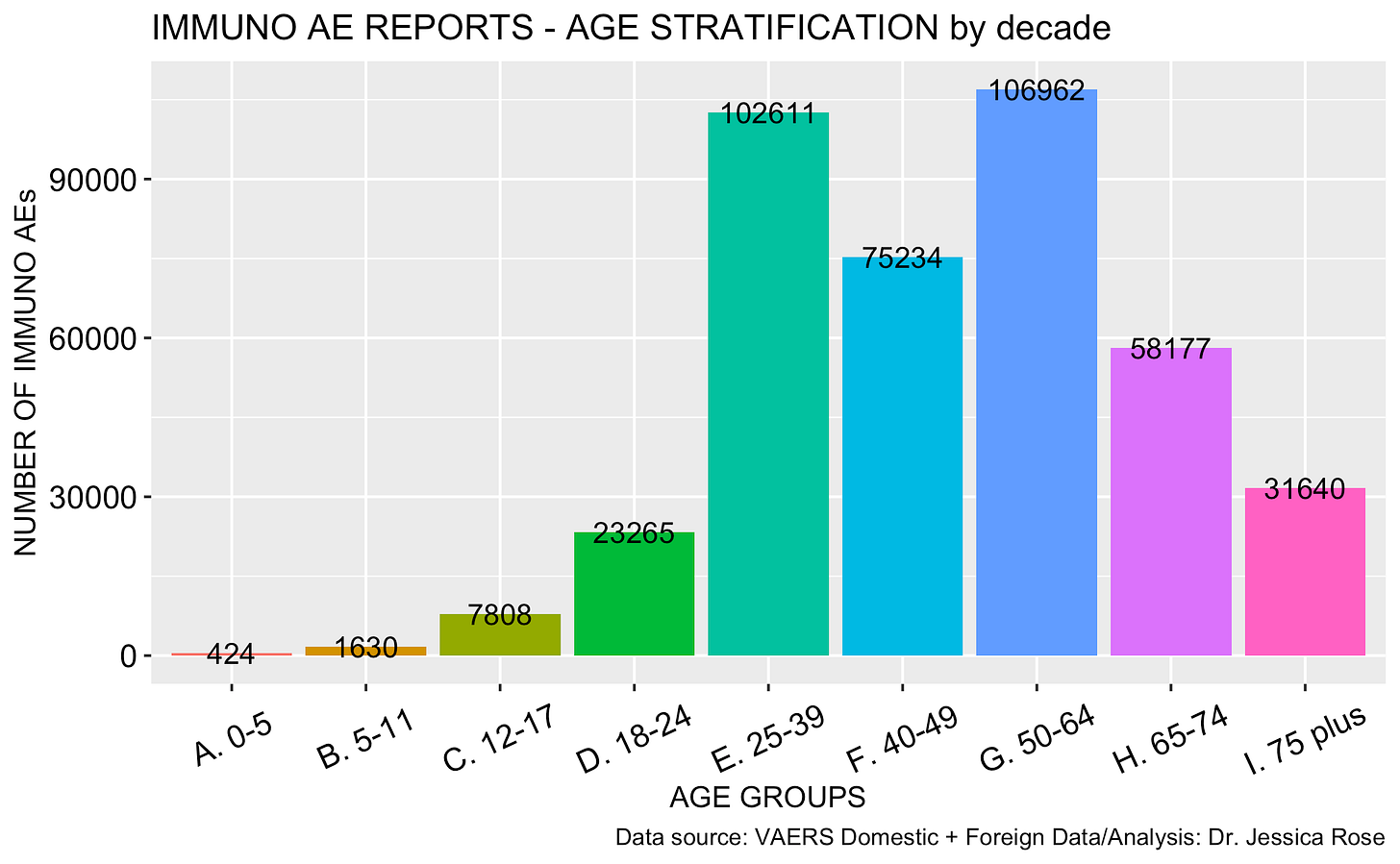The grouped AEs: what do they tell us?
Paying homage to the groupings as they are replaced for stand-alone AEs
I have made some serious groupings of Adverse Events (AEs) in VAERS since the very beginning back in January 2021. By serious, I mean I hand picked hundreds of specific pathology-related MedDRA codes and written algorithms that seek these codes in the column lists of SYMPTOMS in VAERS and then outputs them into a single group. For example, I have made such groups for Cardiovascular, Neurological, Immunological and Hepatological adverse event types. Besides the sheer numbers of reports made to VAERS being off-the-charts in 2021 when compared to report frequencies from previous years, the hepatological injury reports being made by young people is quite interesting to note.
The keyword lists are extensive (as I mention) and the data sets (both the Domestic and Foreign) are also extensive, and growing every week. The computing power and time required to run the algorithms are also, extensive. Therefore, I have made the ‘executive’ decision to not run them anymore as part of my weekly VAERS update. To pay homage to these amazing groupings, I will be reporting my own website’s counts and making some beautiful age-stratified plots for my readers. The plots shown here will be non-normalized and normalized to the total number of people injected per age group per 100,000 doses (according to the CDC). I will also not be listing the keywords since this would take up too much space. If you want my lists, I will absolutely send them to you in an email.
By the way, the discrepancies between the absolute counts in the boxes and the counts plotted are due to data loss from age stratification - not all VAERS IDs have age data.
CARDIOVASCULAR - Domestic (Domestic + Foreign)
And here is the same data normalized by age group per 100,000 injected.1
The normalization helps us see that the distribution of reports is primarily in individuals 25 years of age and older. However, not exclusively. And we can also see that individuals ages 40-49 are just being injected less. This in itself, is very interesting to me. 86% of this age group has received at least one injection. This is my age group and apart from all this COVID nonsense, I am convinced there’s something special about this age group from a confidence point of view. ;) I leave it to the reader to do some critical thinking.
IMMUNOLOGICAL - Domestic (Domestic + Foreign)
And here is the same data normalized by age group per 100,000 injected. Even though fewer individuals ages 40-49 are getting injected, just as many are being injured of the ones who are being injected when comparing to other age groups.
NEUROLOGICAL - Domestic (Domestic + Foreign)
And here is the same data normalized by age group per 100,000 injected.
HEPATOLOGICAL - Domestic (Domestic + Foreign)
I find this entirely too interesting. Why are there so many liver injuries being reported in young people? Did they all become alcoholics maybe? Walensky? Is that what you would say? Or is this also because of their cars?
Normalized: the effect is not lost.
I am going to leave this post as is for now.
Please use these charts for whatever purposes you think they may serve. And ask lots of questions. And to my beloved groups, I bid you adieu for now.
P.S. I am taking requests here for stand-alone AEs to assess and count each week.
This data represents individuals who have had ‘at least one dose’ and statistics are courtesy of the U.S. Department of Health & Human Services. https://covid.cdc.gov/covid-data-tracker/#vaccination-demographic
















Great job, Jessica - as always. And we mix in a little URF and away we go.
I have been perplexed that only Attorney Thomas Renz has been visibly pursuing causes of action in court. Where are all the Ambulance Chasers? Where are the Michael Avenattis? Has the Bar been silenced/corrupted like the Usual Suspects?
Thank you, Jesica, for your continued hard work! Regarding cardiac AEs, I wonder if it is it possible to perform a similar in-vitro study on heart cells as was performed on liver cells. I'm referring to the study that showed reverse transcription of BNT162b2 mRNA into DNA of liver cells.
Also I am curious as to whether it is possible to estimate what the VAERs reporting backlog is at present. Search engines are not helpful for such questions.
I know Jessica speculated a few weeks ago about the increase in reported AEs in VAERS and one possibility that it could be a change in the backlog (i.e. a reduction of the backlog).
I wonder if it is possible to perform a "Fermi problem"-type estimate on the current backlog. Or perhaps someone has done that already and I missed it.